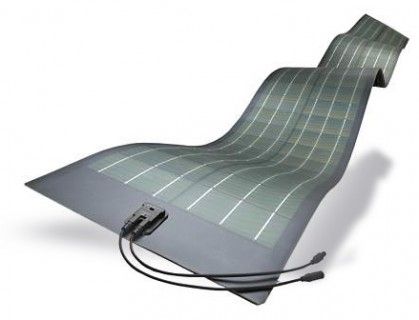Introduction
Thin-film solar panels are becoming more popular all over the world. There are various types of thin-film solar panels and each type has its advantages and disadvantages. This begs the question, of which thin-film solar panel is better suited for you. In this post, we will be exploring two types of thin-film solar panels – silicon and CIGS. We will weigh their pros and cons to help you decide which of them you’d like to have in your corner.
Silicon Thin-Film Solar Panels
The amorphous silicon technology is the oldest used in producing thin-film solar panels. It is one of the three most popular thin-film photovoltaics. In 1976, the first silicon thin-film solar panel was created. This was almost a year after amorphous silicon was first doped.
A feature that sets silicon thin-film solar panels apart from other thin-film solar panels is the fact that they do not have an n-p heterojunction. Rather they have the p-i-n or n-i-p arrangement which includes intrinsic semiconductors. It is important to note that the p-i-n junction is considered more efficient than the n-i-p junction. About 2 % of photovoltaic modules sold are silicon thin-film solar panels.
Pros
- Availability: silicon thin-film solar panels are more widely available than other types of thin-film solar panels.
- Toxicity: silicon thin-film solar panels pose little or no environmental threats. They are not toxic.
Cons
- Efficiency: when compared to the other two widely used thin-film photovoltaics, silicon thin-film panels have the least efficiency. Its highest recorded efficiency is 14%.
- Lifespan: The lifespan of silicon thin-film solar panels is between 10-20 years. This is lower than the lifespan of the other two thin-film solar panels.
- Cost:At $0.69/W, silicon thin-film solar panels are more expensive than CIGS thin-film solar panels.
CIGS Thin-Film Solar Panels
CIGS stands for copper indium gallium selenide. CIGS thin-film solar cells were first formed in 1995. Scientists from National Renewable Energy Laboratory are responsible for forming the first CIGS thin-film solar cells. Just like silicon thin-film solar panels, it is one of the three most popular thin-film solar panels.
Presently, the highest efficiency ever recorded for CIGS thin-film solar panels is 23%. However, research carried out by scientists hints that CIGS thin-film solar panels can reach an efficiency of up to 30%. These thin-film solar panels are usually resistant to low temperatures. In addition, their efficiency is not greatly affected by low light intensity. For these reasons, CIGS thin-film solar panels are more widely used in space than other thin-film solar panels.
Pros
- Efficiency: among the three most popular thin-film solar panels, CIGS thin-film solar panels are the most efficient. Their highest recorded efficiency is 23%.
- Cost: CIGS thin-film solar panels are more cost-effective than silicon thin-film solar panels. They cost $0.60/W.
- Lifespan: CIGS thin-film solar panels have a long lifespan. They can last for about 25 years.
Cons
- Availability: CIGS thin-film solar panels are not as widely available as silicon thin-film solar panels.

Similarities Between Silicon & CIGS Thin-Film Solar Panels
The various types of thin-film solar panels have properties that they all share. These properties set them apart from crystalline solar panels. Although silicon thin-film solar panels and CIGS thin-film solar panels are made from different materials, they have some features in common. These features will be looked at in this article.
Flexibility
Both solar panels are flexible. This makes them versatile as they can be adapted to fit the shape of different rooftop surfaces.
Lightweight
The two thin-film solar panels are lightweight. This allows them to be easily transported from one point to another.
Market Share
Silicon thin-film solar panels and CIGS thin-film solar panels have an equal market share. Their market share is pegged at 2%.
Differences Between Silicon & CIGS Thin-Film Solar Panels
Materials
The two thin-film solar panels are made from different materials. While silicon thin-film solar panels are made from amorphous silicon, CIGS thin-film solar panels are made from copper, indium, gallium, and selenium.
Temperature Coefficient
Silicon thin-film solar panels have a different temperature coefficient from CIGS thin-film solar panels. The temperature coefficient for silicon thin-film solar panels is -0.234%/ºC while the temperature coefficient for CIGS thin-film solar panels is -0.36%/ºC.
Efficiency
The two thin-film solar panels do not have the same efficiency. Silicon thin-film solar panels have an efficiency of 14% while CIGS thin-film solar panels have an efficiency of 23%.
Cost
The cost of the two thin-film solar panels is different. Silicon thin-film solar panels cost $0.69/W while CIGS thin-film solar panels cost $0.60/W.
Conclusion
When deciding on what type of thin-film solar panel to use, a lot of factors must be considered. These factors include budget, purpose, and location. The pros and cons of both silicon and CIGS thin-film solar panels can act as effective guides in choosing the right solar panel for you. If you want to know more about the CIGS and other solar cell coating materials, we’d like to advise you to visit Stanford Advanced Materials (SAM) for more information.




